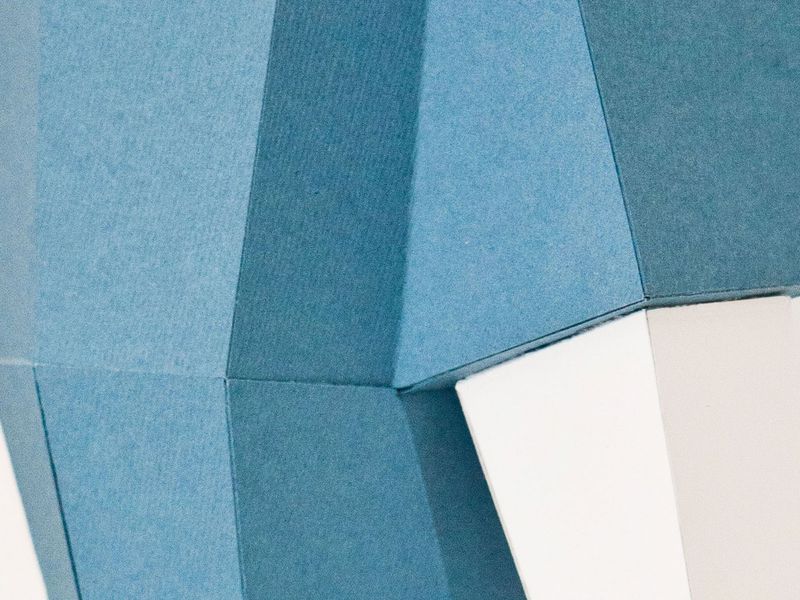We will share with you how to choose paper for creating a papercraft polygonal model.
We recommend carefully choosing your paper because the look and the color of your final model will depend on your choice. It will be easier and more pleasant to work with correctly selected paper. Inappropriate paper may cause problems during the construction process. For example, the paper may flake or crumble in a places around a bend or cut, get soaked through with the glue, or absorb the glue and get deformed.
Main features to pay attention to when choosing paper:
- Weight, structure, and texture.
We recommend designer paper with a weight of 180-250g. You may choose heavier paper up to 350g, but it will be harder to work with. Do not work with office paper (80-90g). It does not hold the shape and the glue will soak through.
In order to determine the right structure for the paper, bend a sample - it should not crumble and flake on the bend line. Bends on the finished models made out of such crumbling and flaking paper will not look clean.
We typically choose paper with a light texture, which makes the glued areas less noticeable. You may also opt for Whatman paper (paper for drawing), or paper for watercolor or pastel.
- Color.
If you want to make a colored sculpture, it is better to select paper toned in its mass - meaning that the paper is not toned only on its surface, but completely soaked with dye. Such paper has the same tone on both sides and in its cross sections. Sculptures made of this paper will be evenly toned, without white lines in the bent areas. In kits made for children, colored paper usually comes one-sided, which will not work because on its cuts, the white thickness of the paper will be easily visible. The most budget-friendly colored paper option is cover binding paper with a weight of 250g, although it is usually sold in a bunch.








